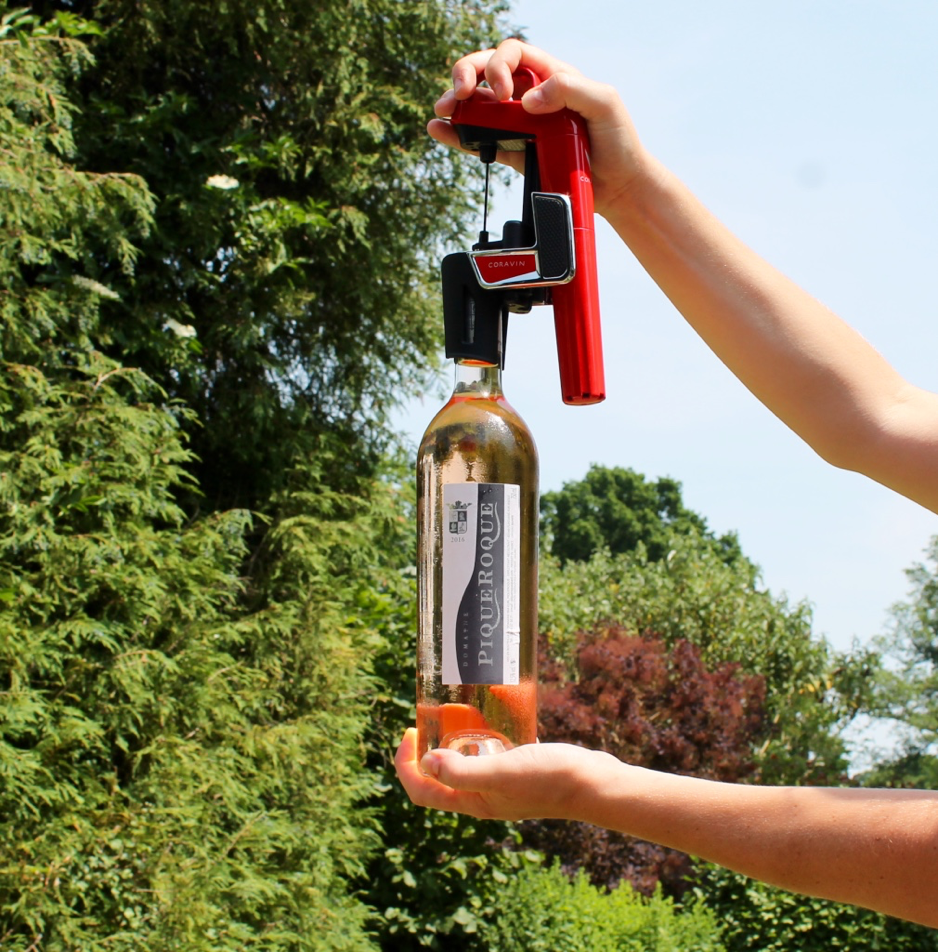What is Coravin?
I don’t tend to be one that rushes out to buy the latest advancements in technology, in fact I try to stay rather far away. This being said, when there was an opportunity to find out all about the Coravin system I could hardly refuse. After months of testing it out I would have to say this is an essential item for any wine enthusiast.
The principle:
The systems' principle is that it allows you to pour just one or two glasses without removing the cork. This is done by a small, thin needle that penetrates the cork and through pressure decants the wine. The pouring needle also replaces the removed wine with a gas called Argon. Argon is the third most abundant gas in the world, behind only Nitrogen and Oxygen. It's non-toxic, odourless and non-flammable meaning it will have no detrimental affect on either you or the wine.
By not removing the cork the wine stays as fresh as if no liquid had ever been removed. The bottle is still secure and no spillages can occur as the natural properties of cork reseals itself. All in all, it’s a very clever piece of kit!
Who should invest in this system?
In my opinion this system is essential for anyone with a serious interest in wine or those who open a bottle and struggle to finish it. As it keeps the wine in the same state as an unopened bottle it allows great comparisons to be made. Many of the best bottles of wine have a great potential to age. By using the Coravin system a small glass can be removed when you first buy the bottle. This can be left for the recommended years and you can do a comparison. Another great aspect is the ability to try an ageing wine without committing to the whole bottle. All wines go through a process at which they are at their best to drink. Those destined to increase in complexity with time in the bottle have a simple curve format. There will be a period when they are at their best and past that they begin to deteriorate. Equally, if you have gone to the trouble to age a wine, even if only for a couple of years or so, you don’t want to open it too early. This system allows you to test the wine before removing the cork.
For those studying anything to do with wine I believe this is essential. The reason for saying this is again all about comparisons. The ability to taste three different grapes from the same region or the same variety from different areas is fantastic when studying. In the WSET-Diploma these assessments can provide key marks and allow you to produce better tasting notes. Another area of comparison could be the wines' maturation, style, use of oak, or even climatic differences. Of course, without the Coravin system you can still do these tastings however, opening (and finishing) three bottles in one night is certainly not recommended. This enables you to repeat tasting sets or use the same bottle in multiple tastings without wasting the rest of the precious wine!
If you are not looking to enjoy wine in such a serious manner then this still might be the choice for you. Ever wanted to just try a glass of a special wine but not finish the whole bottle? Now you can. Ever wanted to have a glass of white but your partner wants red? Now you can. In reality this system just increases choice and improves the quality of your wine experience. That wonderful wine that you opened last weekend and haven’t got around to finishing no longer needs to be destined to the cooking pot.
How to use it:
This is the important bit - and before using your system I would fully recommend reading the instructions and following the picture guide. Firstly, always purge the needle before entering it through the cork into the bottle. This point is extremely important as the Argon gas must be in place to pressurise the wine and allow you to pour a glass. Push the handle through the cork into the wine and then tip the bottle to pour. Once you have finished decanting the wine pull the handle back up and remove the clasp from the bottle. As previously mentioned the cork will reseal itself and be both air tight and spillage free. The system is extremely easy to clean either by running the nozzle under tap water or by using the cleaning equipment for the needle.




